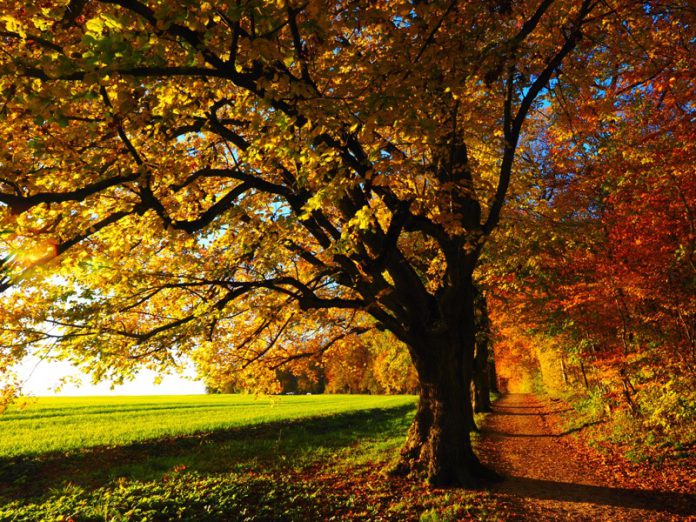Fall and winter are usually the seasons that spell doom for our lawns. This is especially the case in regions where homeowners can expect harsh weather conditions in terms of heavy snow and ice.
We decided to dedicate an article to landscaping priorities for fall and winter and give you a few tips and tricks on how to make sure that your yard and grass survive the harshest periods of the year.
Protect trees and shrubs
Many homeowners generally consider that trees, especially mature ones, do not require much care and attention but nothing could be further from the truth. Trees and shrubs could easily get damaged by ice and harsh weather conditions so here are a few things to take note of before autumn starts.
1. Prune your shrubs
Shrubs can be very decorative, but they can get quite messy during the dormant season when they are not in bloom. Most landscaping specialists advise using the dormant season to prune your shrubs, ideally before their spring growth starts.
It is ideal not to leave your shrubs exposed to harsh weather conditions for a long period after pruning them because freshly cut wounds on shrubs can make them more susceptible to frost damage. Start pruning in winter just before spring comes so that you can ensure new growth and minimize branch damage.
2. Add mulch
When it comes to trees you should add a layer of mulch that will protect your tree from frost damage and protect your soil from erosion and losing water.
A good rule of thumb is to apply around 2-inch layers around trees which will protect tree roots from freezing and keep a steady temperature around the base of your trees.
If your trees are highly susceptible to water loss you can wrap them and shield them from winter and autumn winds. For yards that are decorated with lush trees with highly complex branch systems, you can tie the branches to make sure that they are not damaged by ice, snow, and wind, using wire or rope,
If you are faced with long periods of harsh weather and cold climate then you can plant Birch trees that are highly aesthetic and easy to maintain and look beautiful even when they are not blooming.
Do not forget about the weather conditions and patterns in your region
Do not be fooled by the colourful and tropical plants that you can buy in your local plant nurseries because they might not be appropriate for your regional climate and might just end up not surviving the fall and winter.
Although it might sound like a logical thing to do, many new homeowners rush to buy plants merely for the aesthetics completely ignoring the fact that they will never survive in their climate zone.
Dig out plants that cannot survive in frozen ground
Not every plant in your yard will be able to survive falls and winters. Even some perennial plants have root systems that need to be removed from the soil and replanted again when it gets warmer. These include dahlias and some types of tulips.
These plants can easily be dug out from the ground and stored in your shed and reused next year.
Digging out buds before frosts should be on your priority list because you can count that harsh frost will certainly damage the buds and they will not be able to survive before the next sprouting.
This process requires a bit of work and extra effort, but it is a good tip to save on your landscaping budget and avoid having to buy the same plant types all over again.
Cover the most tender plants
Tender plants like most types of roses have root systems that are not evolved enough to survive harsh weather conditions.
Many sellers graft ornamental types of roses onto hardy root systems. This is why you should cover the grafted section of your rose bushes.
Do not forget about watering your plants
Although winter usually brings snow and ice, and rain, many evergreens will struggle with water. Some evergreens are not highly evolved to trap water or store water throughout winter so they might be susceptible to frost damage.
Frost can actually damage root systems which means that some sections of your evergreen plants might not end up being able to absorb water.
By watering your plants just before frosts come you are giving them a chance to trap enough water to survive the frosts.
Do not kill your lawn with salt
If you have a driveway then you know that dealing with ice is an inevitable part of every winter, one of the most common ways to deal with ice build-up on your driveways is by using salt or salt-based solutions to prevent ice from building up.
However, using salt-saturated solutions can kill your lawn, your shrubs, and even damage your trees. This is because salt gets absorbed through leaves and roots causing plant tissue to dry out.
Instead of using salt as a solution to ice build-up, you can use other options like sand or calcium-based solutions that will not damage your plants.
Do not forget to remove piles of leaves
Many homeowners are not aware that leaf build-up can actually suffocate lawns and prevent sunlight from reaching the grass.
The grass continues growing and absorbing sunlight even in autumn, if it gets suffocated by a layer of dead leaves you can count that it will not be able to absorb the necessary sunlight and keep growing.
If you let the leaves pile up and get covered by a layer of snow, then you might end up facing mould spreading on your grass.
Bottom line
We hope you learned something new about landscaping and found our tips and made good use of our tricks on how to sustain your yard during fall and winter.
These are just some of the many things that you can do to protect your yard but they are the most essential so grab your tools and get to work before the first frosts hit, your yard will thank you in spring.















